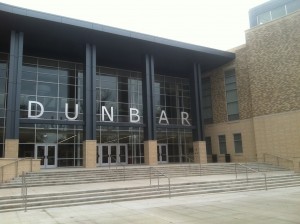All District students deserve to attend school in a safe and modern building that provides a healthy learning environment. Unfortunately, the city’s capital funding process often appears arbitrary and inequitable, with many schools waiting years to receive much-needed repairs and renovations. This week, the Council Committee on Education is looking for your feedback on how to make this process more equitable and transparent.

DCPS schools are scheduled for capital improvements through the city’s Capital Improvement Plan (CIP). The CIP includes a six-year plan for renovating or building schools and other DC government buildings. It includes a range of improvements, from complete renovations to smaller upgrades of certain sections of a school (such as science labs) to roof replacements.
Of course, there is never enough money to make all the repairs needed, so the District needs to prioritize school repairs. The Committee on Education is considering prioritizing projects in the Capital Improvement Plan based on the following factors, in this order. And the committee is seeking input – are these the right factors? Are they in the right order?
- Equity: Schools that have received the least investments would be prioritized. This would take into account the date and type of each school’s most recent modernization, the amount of facility investments in the school over last decade, a facility condition assessment, and the amount of facility investments in the school’s feeder pattern.
- Student Demand: Schools with the greatest student demand would be prioritized. This would take into account enrollment (including enrollment potential in the feeder pattern) and current building utilization (including the use of portables).
- Community-Centered Schools: Schools would be prioritized based on the needs of neighborhoods. This would look at public financial investment in the neighborhood over the last decade, the number of school-aged children in the boundary, and projected child population growth.
- Educational Facilities Effectiveness: This factor takes into account how well school facilities support teaching and learning. For example, buildings with an open classroom layout are no longer considered suitable learning environments for children and would not be considered effective.
The Committee wants to develop a more rational, fair, and transparent process for setting priorities over major school repairs. You have a chance to offer your feedback on this proposal by Friday, May 8th — see here for the online survey.
To print a copy of today’s blog, click here.
